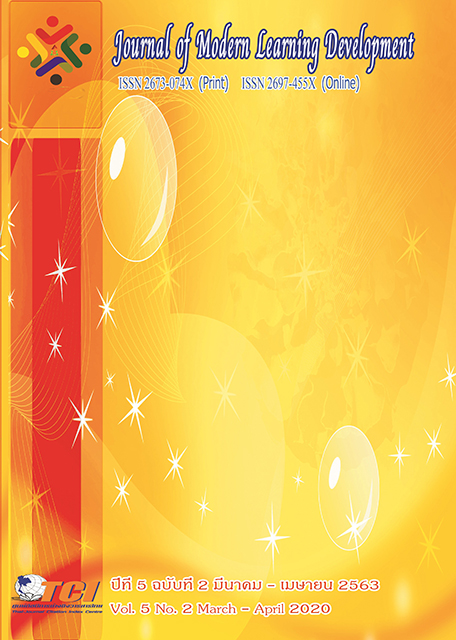A Study of Sangha’s Activity Management for Dhamma Propagation of Nongwusaw District, Udonthani Province
Main Article Content
Abstract
The aims of this research were: 1)to study the concept of dhamma propagation according to Theravada Buddhism; 2) to study the current conditions of Sangha’s activity management for dhamma propagation in NongWua So District, Udonthani Province; 3) to study the results and guidelines for promoting Sangha’s activity management for dhamma propagation in NongWua So District. This study was carried out by means of a qualitative research methodology through analyzing data obtained from the Tipiṭaka, Buddhist academic documents, related research and fieldwork research. The 35 key informants were interviewed for data collection The obtained data were presented the descriptive analysis.
The study of the current conditions of the Sangha in NongWua So District, Udonthani Province revealed that the activities of the dhamma propagation according to the teachings of the Buddha is to teach the dhamma by preaching the people to have morality on a daily basis.The monks are radio broadcasting reporters in educational institutions of various government and private agencies. They perform ecclesiastical duties by performing morning and evening chanting on a daily basis. In addition, they are the dhamma propagators with a broad vision.
The guidelines for promoting the dhamma propagation activities of monks in NongWua So District, Udonthani Province are that methods of organizing activities can be summarized into two major issues: 1) the form of activities in the propagation, namely dhamma propagation by presenting the Buddhist proverbs, ‘PhayaIsan (Isanteachings)’ in connection with the situation and discerning thoughts, comparisons, and figurative presentations that are easy, uncomplicated and understandable. The Sangha in NongWua So District, Udonthani Province organized propagation activities both in temples and outside, emphasizing the propagation in two forms: 1) proactive and 2) passive propagations. As for proactive propagation, monks in NongWua So District use the method of propagating dhamma in systematically managing the Sangha's affairswhile for passive propagation, they use the methods of propagating the dhamma that has a good returned results and a positive response from Buddhists who were benefited from the messages by efficiently applying it into everyday life. The way of using technology to spread the dhamma of monks in NongWua So District is to use of quality technology in accordance with the Buddhist principles, which can be linked to the knowledge of academic science by using the principles of Satisampajañña (consciousness).
Article Details
References
พระพรหมคุณาภรณ์ (ป.อ. ปยุตฺโต). (2550). รุ่งอรุณของการศึกษาเบิกฟ้าแห่งการพัฒนาที่ยั่งยืน. กรุงเทพมหานคร: บริษัทพิมพ์สวยจำกัด,.
พระไตรปิฎกภาษาไทย (2539). พระไตรปิฎกภาษาไทย ฉบับมหาจุฬาลงกรณราชวิทยาลัย. กรุงเทพมหานคร: โรงพิมพ์มหาจุฬาลงกรณราชวิทยาลัย.
อรทัย พนาราม. (2547). สื่อมวลชนกับการเผยแผ่พระพุทธศาสนา. วารสารพุทธศาสน์ศึกษา, 11(3), 7-65.
Archan VinaiUssivakul. (1996). An Introduction to Buddhist Meditation for Result. Bangkok: Tippayawisuit Partnership Ltd.


